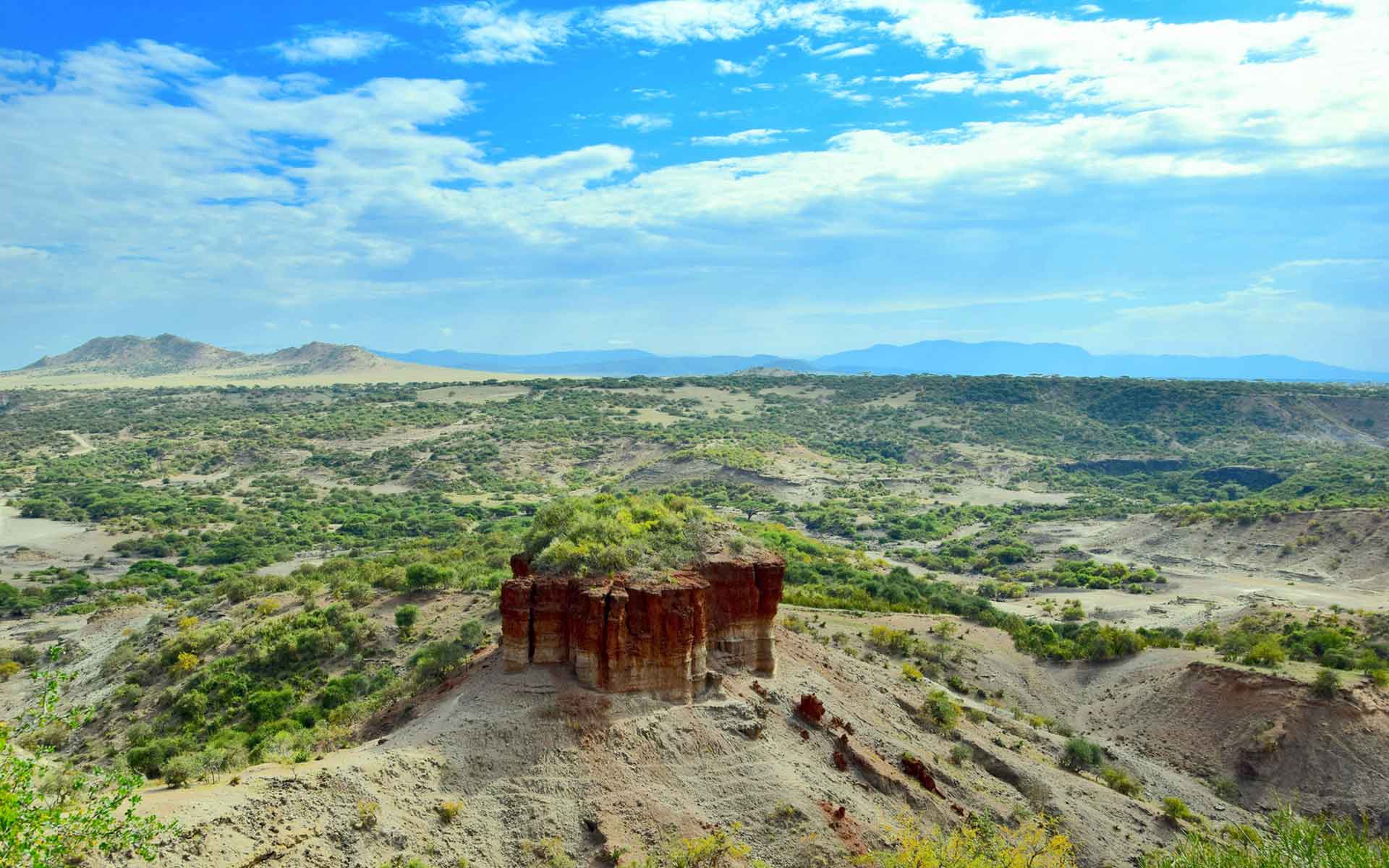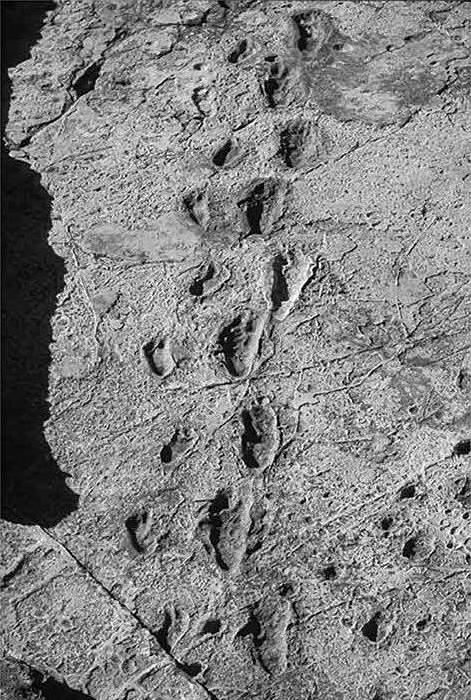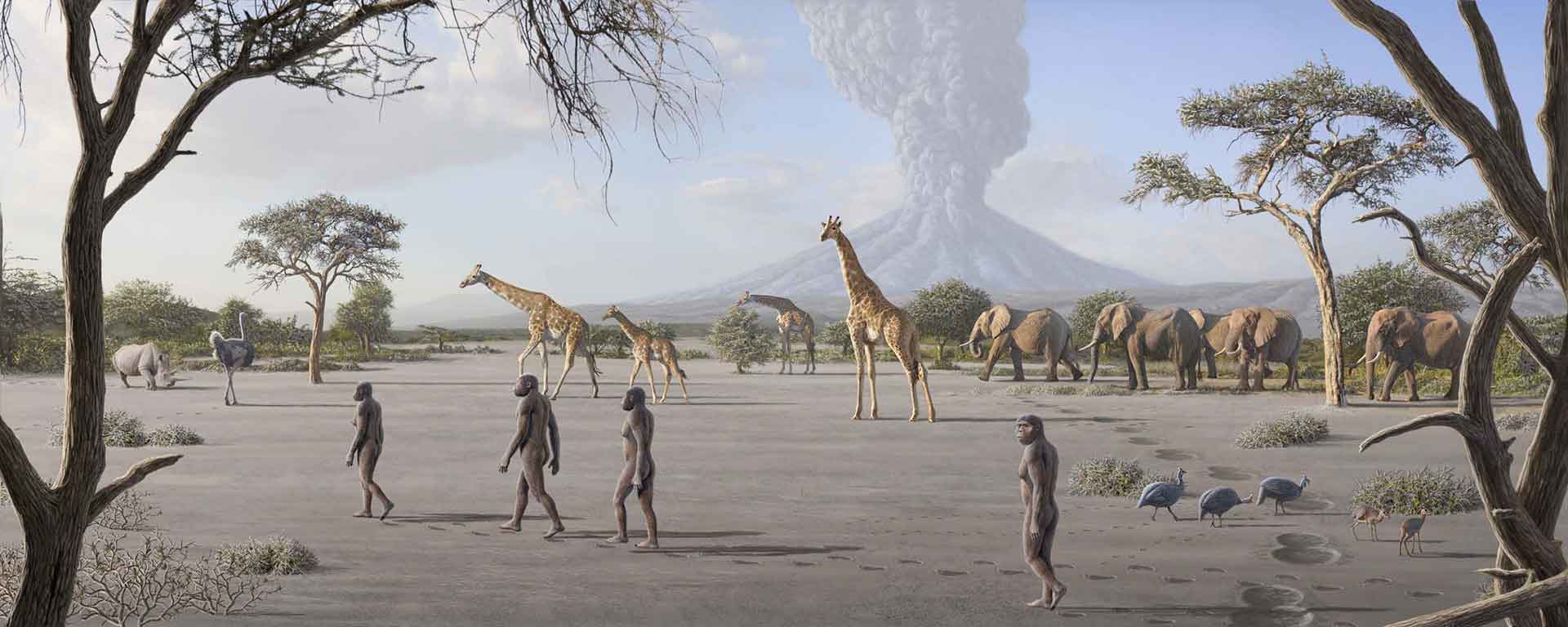Palaeoanthropological sites of Human Evolution of Laetoli – Olduvai Gorge
TANZANIA

Olduvai Gorge. Deposition sequence of pyroclastic material at Olduvai Gorge.
Geological Period
Pliocene – Holocene
Main geological interest
Paleontology
Location
Ngorongoro Conservation Area, Arusha, Tanzania.
3°13’32.0″S, 35°11’32.0″E
Olduvai Gorge. Deposition sequence of pyroclastic material at Olduvai Gorge.
The Palaeoanthropological sites indicating Early Hominin development and activities.
Laetoli and Olduvai Gorge are the two important paleoanthropological sites, which depict the direct evidences of early hominin development and activities. These sites are rich in hominin fossils, artifacts, and tracks. At Laetoli, fossil footprints occur in a 27 m long track. They are dated at 3.6 Ma and are associated with the earliest hominids known as Australopithecus afarensis. These footprints provide well-accepted evidence that hominins were bipedal as early as several million years ago. Hominid fossils from Olduvai Gorge include remans of Zinjanthropus boisei (1.848 Ma), Homo habilis (1.848–1.832 Ma), Homo erectus, earliest modern humans (Homo sapiens) and numerous stone tools, which suggest that there was co-existence of multiple species of hominids in Olduvai.
- Geological description
The stratigraphic sequence of both Laetoli and Olduvai gorge are associated with volcanic eruptions from the Ngorongoro Volcanic Highlands, which generated vast amounts of volcanic ash and pumice (pyroclastic material) that accumulated in the east of the Serengeti Plains. The depositional sequences are divided into a number of beds in which the footprints and hominid fossils were discovered.
The Laetoli Beds are subdivided into a Lower Unit (4.3 Ma) and Upper Unit, both composed of eolian and air-fall tuff. The lower unit is characterized by rain-printed surface and few fossils. The upper unit, dated at 3.8 Ma, is 60m thick and contains the fossils and footprints.
The Olduvai Gorge is 48Km long and 100m deep and extends to the east into the Olbalbal depression cutting through numerous layers of volcanic ash and pumice. Its stratigraphic succession is nearly 100 m thick and divided into seven formations that overlie Neoproterozoic basement rocks of the Mozambique Belt. The formations represent deposition in volcanic, alluvial fan, fluvial, aeolian, and lacustrine settings. Three million years prior to the formation of the gorge, the region was a low area periodically occupied by a large, saline lake. During this time, the lake and surrounding areas were home to earliest hominid ancestors.
- Scientific research and tradition
From the early 1900s, the area has attracted the world and scientific community attention as many discoveries of the important hominid fossils and artifacts that explain in details the human evolution. In 1960s, the leakey family establish a research camp, which still operates. A number of research papers and PhD’s have been published.
- Reference
Ashley, G.M. et al. (2010) ‘Sedimentary Geology and Human Origins: A Fresh Look at Olduvai Gorge, Tanzania’, Journal of Sedimentary Research, 80(8), pp. 703–709. Available at: https://doi.org/10.2110/jsr.2010.066.
Habermann, J. (2016) Pleistocene volcanism of Bed I, Olduvai Gorge, Tanzania: chemostratigraphy, sedimentology, and paleoecology. Thesis. Faculty of Natural Sciences the Friedrich Alexander University.
Hay, R.L. (1976) Geology of the Olduvai Gorge, Geology of the Olduvai Gorge. Berkeley, California: University of California Press. Available at: https://doi.org/10.1525/9780520334229.
Hay, R.L. and Kyser, T.K. (2001) ‘Chemical sedimentology and paleoenvironmental history of Lake Olduvai, a Pliocene lake in northern Tanzania’, GSA Bulletin, 113(12), pp. 1505–1521. Available at: https://doi.org/10.1130/0016-7606(2001)113<1505:CSAPHO>2.0.CO;2.
Leakey, M.D. and Hay, R.L. (1979) ‘Pliocene footprints in the Laetolil Beds at Laetoli, northern Tanzania’, Nature, 278(5702), pp. 317–323. Available at: https://doi.org/10.1038/278317a0.
Mollel, G.F. (2007) Petrochemistry and geochronology of Ngorongoro Volcanic Highland Complex (NVHC) and its relationship to Laetoli and Olduvai Gorge, Tanzania. Thesis. Rutgers University – Graduate School. Available at: https://doi.org/10.7282/T32N52NH.
- Author(s)
Joshua Mwankunda
Senior Assistant Conservation Commissioner/Ngorongoro Lengai UGGp/ Ngorongoro Conservation Area Authority
Lightness S. Kyambile
Cultural Heritage Officer/Ngorongoro Lengai UGGp/ Ngorongoro Conservation Area Authority
Ramadhani Khatibu
Senior Geologist/Ngorongoro Lengai UGGp/ Ngorongoro Conservation Area Authority


